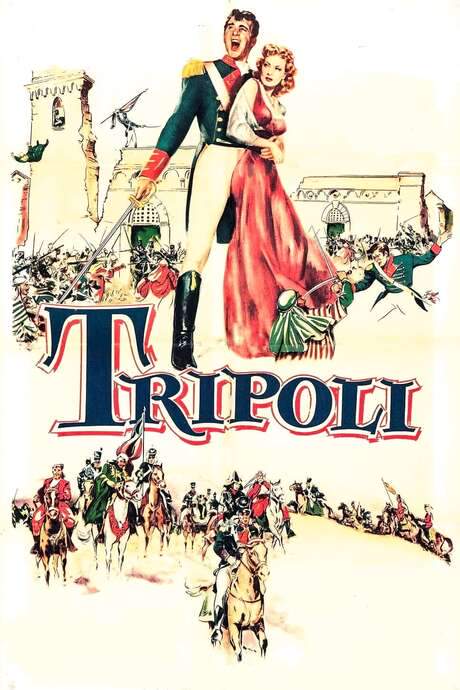
John Paul Jones
Year: 1959
Runtime: 126 mins
Language: English
Director: John Farrow
Chronicles the daring exploits that have become legend in American naval history, following Revolutionary War hero John Paul Jones from his Scottish youth, through his famed battles on the high seas, to his later service as an admiral for Catherine the Great of Russia.
Warning: spoilers below!
Haven’t seen John Paul Jones yet? This summary contains major spoilers. Bookmark the page, watch the movie, and come back for the full breakdown. If you're ready, scroll on and relive the story!
John Paul Jones (1959) – Full Plot Summary & Ending Explained
Read the complete plot breakdown of John Paul Jones (1959), including all key story events, major twists, and the ending explained in detail. Discover what really happened—and what it all means.
A United States Navy officer recounts the life of John Paul Jones to new midshipmen at the United States Naval Academy. In 1759, a young John Paul Jones begins an apprenticeship aboard a merchantman, serving on several ships and gradually rising to command his own vessel by 1773.
In Tobago, a mutinous subordinate challenges Paul, whom Jones kills; the governor, reluctant to have him arrested, advises him to go to Virginia, where his brother lives. Paul agrees, disguising himself by changing his name to “John Paul Jones.” Upon arriving in Fredericksburg, Jones discovers that his brother has recently died and left his estate, including two slaves Scipio and Cato, to him. Because Jones ardently opposes slavery, he frees the pair, who choose to stay and work for him. He also retains his brother’s attorney Patrick Henry. Jones shares Henry’s hostility toward British rule, but finds himself torn between their friendship and his romantic feelings for Dorothea Danders.
The will’s instruction to settle down as a father proves ill-suited for Jones, and after Dorothea’s father rejects his suit, he resolves to return to the sea. The American Revolutionary War begins, and [Jones] is commissioned into the Continental Navy, taking part in a bold raid of Nassau despite his superiors’ misgivings. Reuniting with Scipio and Cato, he embarks on a cruise that yields eighteen British ships laden with valuable supplies. Yet his rapid success is tempered by persistent class prejudice, which blocks further promotions and drives him to Valley Forge to tender his resignation.
George Washington urges Jones to travel to France and aid Benjamin Franklin in winning French support for the American cause. In France, Jones is celebrated as a hero and, at Franklin’s urging, takes command of a former Dutch frigate. With this ship, he raids the English coast, including an attack on Whitehaven, while choosing to treat the town’s people with restraint. Political rivalries again threaten his position, and his ship is taken from him. Jones falls in love with the French lady-in-waiting Aimee de Tellison, and with Franklin’s help they persuade Louis XVI to fund a new ship under the American flag, the Bonhomme Richard.
Commanding the Bonhomme Richard, he battles the British frigate Serapis. Although his ship is badly damaged, Jones refuses to yield and proclaims, > I have not yet begun to fight! <, as his crew storms Serapis’s deck and compels Captain Richard Pearson to surrender even as Jones’s own vessel sinks. Jones then takes command of Serapis and returns to France, where his romance with Aimee cannot be pursued further due to his social status.
When the Revolutionary War ends in 1783, Jones’s Continental Navy career ends with the disbandment of the force, prompting him to seek new paths and eventually join the Imperial Russian Navy after answering Catherine the Great’s call. Surrounded by sycophantic nobles, Catherine the Great tests Jones’s resolve and finds him steadfast in the face of courtly temptations. She grants him command of the Black Sea Fleet, which Jones leads to victory over the Ottoman Navy during the Russo-Turkish War. Granted a title of nobility, Jones returns to Paris and reunites with Aimee, but falls seriously ill; as he lies dying, Aimee writes down a letter that Jones composes listing the qualities all naval officers should possess.
The narrative returns to 1959 at the U.S. Naval Academy, where the narrating officer closes with reflections on Jones’s enduring legacy for future generations of sailors.
Last Updated: October 07, 2025 at 09:00
Unlock the Full Story of John Paul Jones
Don't stop at just watching — explore John Paul Jones in full detail. From the complete plot summary and scene-by-scene timeline to character breakdowns, thematic analysis, and a deep dive into the ending — every page helps you truly understand what John Paul Jones is all about. Plus, discover what's next after the movie.
John Paul Jones Timeline
Track the full timeline of John Paul Jones with every major event arranged chronologically. Perfect for decoding non-linear storytelling, flashbacks, or parallel narratives with a clear scene-by-scene breakdown.

Similar Movies to John Paul Jones
Discover movies like John Paul Jones that share similar genres, themes, and storytelling elements. Whether you’re drawn to the atmosphere, character arcs, or plot structure, these curated recommendations will help you explore more films you’ll love.
Explore More About Movie John Paul Jones
John Paul Jones (1959) Scene-by-Scene Movie Timeline
John Paul Jones (1959) Movie Characters, Themes & Settings
John Paul Jones (1959) Spoiler-Free Summary & Key Flow
Movies Like John Paul Jones – Similar Titles You’ll Enjoy
Master and Commander: The Far Side of the World (2003) Ending Explained & Film Insights
Tom Jones (1963) Spoiler-Packed Plot Recap
Captain Horatio Hornblower R.N. (1951) Full Summary & Key Details
Captain John Smith and Pocahontas (1953) Story Summary & Characters
Captain Caution (1940) Story Summary & Characters
Janice Meredith (1924) Full Movie Breakdown
Anne of the Indies (1951) Movie Recap & Themes
The Sea Hawk (1940) Movie Recap & Themes
Old Ironsides (1926) Full Movie Breakdown
Mutiny (1952) Full Movie Breakdown
The King’s Pirate (1967) Complete Plot Breakdown
Tripoli (1950) Detailed Story Recap
Yankee Buccaneer (1952) Ending Explained & Film Insights
You, John Jones! (1943) Spoiler-Packed Plot Recap
Captain Pirate (1952) Movie Recap & Themes

















